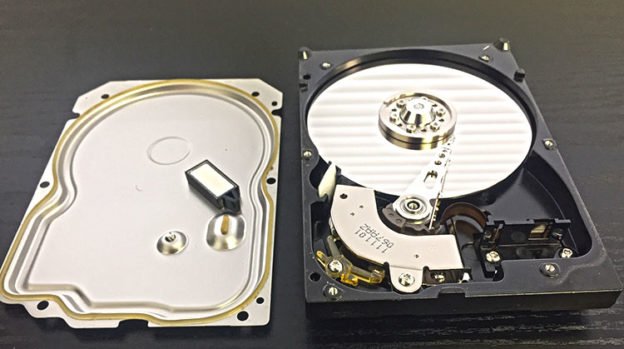
The first question that comes to mind is, will scratching platters inside of the hard drive make it unrecoverable?
The answer is rather simple.
No.
That’s because there are ways to salvage data from the portions of the platters that were not scratched. Encrypting the data with a 256-bit encryption will actually make that data even more difficult to recover. If your goal is to keep your data from being recovered in cases where you may sell your computer or it is being taken to the landfill, you can render whatever is on the hard drive unrecoverable.
It may be a little hard to actually picture because we already know that surface scratches on CDs or DVDs have little effect on their performance. However, deep scratches can cause skipping and other issues. Hard drive platters are similar in a way as scratches will not damage data.

Here’s what you will have to do.
You will need to open the hard drive, disassemble it completely, remove all the platters and inflict damage on each and every one of them. For example, smashing them into small pieces with a hammer will do the trick. We knew of someone who used to ‘shoot’ hard drives with a nail gun. While it sounded good, there is a disclaimer. If there are scratches on the platters, there is still a possibility of recovering at least some data.
Here is where that possibility exists.
The platters have to be completely destroyed. This means that all that remains of the platters is either tiny fragments or platter dust. Because if they are not, the possibility of recovering some data is still a very real threat.
For example, if it turns out that the exact file that your hacker is looking for just happens to be hidden in a place where it was untouched by the scratches then guess what? Your data is ripe for the picking. Well, at least whatever is in that particular undamaged file. That is usually enough to provide a hacker with something to exploit or turn into instant cryptocurrency through a fast flip on the Darknet.
Before you start to get a bit twitchy, you need to know that the odds of this happening are probably in the range of one in a million. However, that still indicates that a possibility exists. If you intend to keep the hard drive but want to delete the data on it for good, there is an option. There’s a software program that uses military standard algorithms to erase the data. It goes by the highly obvious name of Eraser. It is actually an advanced security tool that permits you to remove all sensitive data for good. Think of it as a highly effective squeegee that takes everything away that it comes in contact with regardless of the amount of information contained in that point of contact.
Some erasure methods include algorithms including US Air Force 5020 (3 passes) or German VSITR (7 passes). A good way to check whether or not the erasure worked is to run data recovery software on the media and see if it manages to find anything. It will tell you if the media is in fact empty. As far as we’re concerned, you can’t get much better than military standard algorithms and so far, they seem to be the best thing available for a complete hard drive platter erasure.
So what if you toss the hard drive into a fire, that’s got to cook the data beyond repair, right? Well, unless the fire is hot enough to actually melt the platters, it’s not going to do much. Sure, fire is going to damage the head stack assembly or possibly the actuator arm and all the plastic inside but once those ‘cooked’ platters are transplanted into a donor disk, it will be read assuming there is no damage to those platters.

We have actually had a number of cases where hard drives were destroyed by fire but the platters were still salvaged and the data recovered.
What about water damage, that’s got to do something to a hard drive, right?
Well, you have to look at the material the platters are made of in order to see whether or not water is going to have any kind of effect. Platters are generally made from either an aluminum alloy or a mixture of glass and ceramics. This means that water can’t hurt them as they will not corrode. Sure, water is going to wreck other parts of the computer such as the PCB and assorted other electronics but the platters will stay intact. Once they get transferred into a donor drive, BOOM! The data is recoverable.
The point I’m trying to make here is that data recovery is possible in many different circumstances. Yes, the platters need to have sustained serious damage in order for stored data to be deemed unrecoverable. However, platters are made to sustain plenty of extreme conditions, as has been outlined above.

